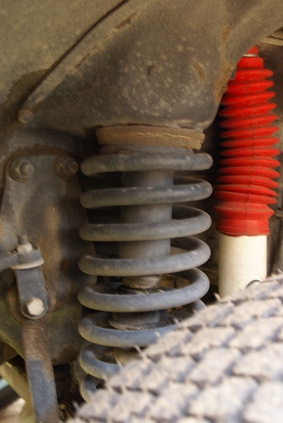
Air (pneumatic) suspensions are one of three basic types of suspensions, the other two being spring and hydraulic. While air suspensions do offer ride-height adjustability, the air-bag springs that they utilize to suspend the vehicle are slow to respond and dynamically inferior in almost every other way.
The standard air suspension's primary problem is that the user must reduce pressure in the air bag to drop the car and increase pressure to raise it. This results in a car that handles like a barge when it's lowered and bucks like a concrete bronco when its set higher -- exactly the opposite of what you'd want.
Air suspensions require a network of air hoses, junction regulators and control valves to function and an air compressor to fill the bags. While lighter than an equivalent hydraulic setup, these parts can add over 100 lbs. to the car, depending on compressor size. Moreover, every junction is an opportunity for leaks.
Air is elastic, meaning that it has mass and doesn't like to change direction. Air suspensions cannot respond to changes in road conditions with anything approaching the speed of an equivalent magneto-rheological (MR) dampener. An MR dampener uses a magnet to thicken the metallic fluid inside its body, allowing the car's computer to change ride firmness at the speed of electricity.